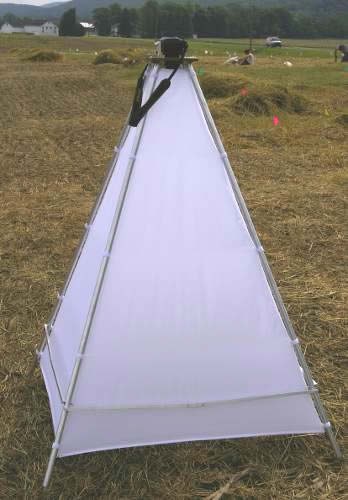
Ground Cover "Light Box" in action
Conclusions
- Free and Open Source Software (FOSS) provides adequate tools for image analysis.
- Small differences in ground cover can be detected by analyzing digital images.
- Ground cover can quickly be analyzed from a large number of images. Efficiency is maximized when many images can be analyzed with the same thresholds.
- This image analysis approach is powerful - commercial alternatives we examined did not facilitate the calculation of color ratios.
- This approach to image analysis is very flexible, and could be customized to other analysis problems.
Caveats
- Power and flexibility come at a price; this is not an "off the shelf" tool. This approach requires that the users customize the tools to their own application.
- Image quality and uniformity is very important - greater uniformity in exposure and lighting with a batch of pictures will likely increase accuracy. Comparisons between images acquired under different conditions should be avoided. We have been experimenting with a "light box" tent for imrpoving and standardizing lighting.
- The combination of thresholds that worked for our analysis may not work for other users. Soil color is important. Soil that is light colored or dry may not be easily separated from dead plant residue. Sandy soils, which are both lighter colored and fast-drying can be very difficult to separate from residue.
Acknowledgements
- Johannes Postma for assistance in learning to use CIMG
- Dave Sandy and Steve Kineer for image acquisition
- Northeast Integrated Pest Management program for their support of "Developing a decision framework that optimizes cover crop integration", Grant no. 2007-34103
- FOSS community for creating and maintaining excellent software tools.

